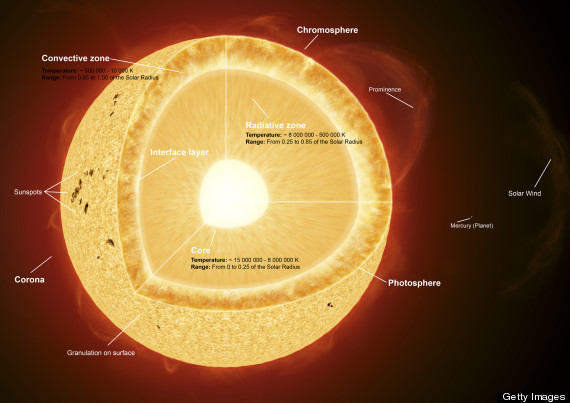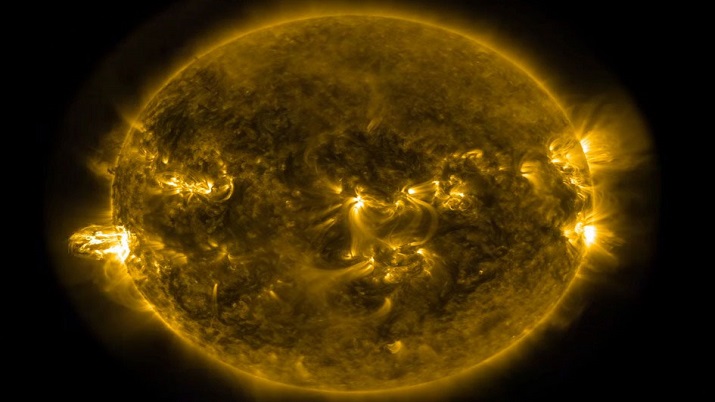
The sheared magnetic field configurations and the existence of coronal and chromospheric null points, which are now inferred more commonly in solar flares, require ultimately 3D reconnection models, possibly involving null point coalescence, spine reconnection, fan reconnection, and separator reconnection. A more realistic approach seems to be bursty 2D reconnection models ( Figure 11.15, bottom), which involve the tearing mode and coalescence instability and can reproduce the sufficiently fast temporal and small spatial scales required by solar flare observations. Only steady 2D reconnection models can be formulated analytically they provide basic relations for inflow speed, outflow speed, and reconnection rate, but represent oversimplifications for most (if not all) observed flares. Theory and numerical simulations of magnetic reconnection processes in the solar corona have been developed for steady 2D reconnection ( Figure 11.15, top), bursty 2D reconnection, and 3D reconnection.

Magnetic reconnection processes can occur in a slowly changing quasi-steady way, which may contribute to coronal heating ( Section 5.9), but more often happen as sudden violent processes that are manifested as flares and CMEs.
#Sun corona white free
Topological changes in the form of magnetic reconnection always liberate free nonpotential energy, which is converted into heating of plasma, acceleration of particles, and kinematic motion of coronal plasma. in filaments, in twisted sigmoid-shaped loops, and along sheared neutral lines). Of course, such magnetic restructuring processes occur wherever magnetic stresses build up (e.g. These three dynamic boundary conditions are the essential reasons why the coronal magnetic field is constantly stressed and has to adjust by restructuring the large-scale magnetic field by topological changes, called magnetic reconnection processes.

the tachocline) which rises by buoyancy and emerges through the photosphere into the corona, (2) the differential rotation as well as convective motion at the solar surface continuously wrap up the coronal field, and (3) the connectivity to the interplanetary field has to constantly break up to avoid excessive magnetic stress. The solar corona has dynamic boundary conditions: (1) the solar dynamo in the interior of the Sun constantly generates new magnetic flux from the bottom of the convection zone (i.e. Aschwanden, in Encyclopedia of the Solar System (Third Edition), 2014 6.1 Magnetic Reconnection


 0 kommentar(er)
0 kommentar(er)
